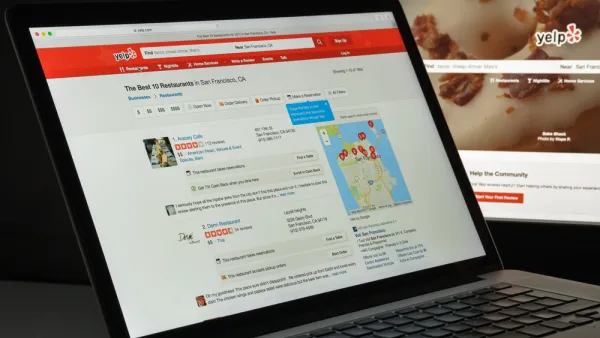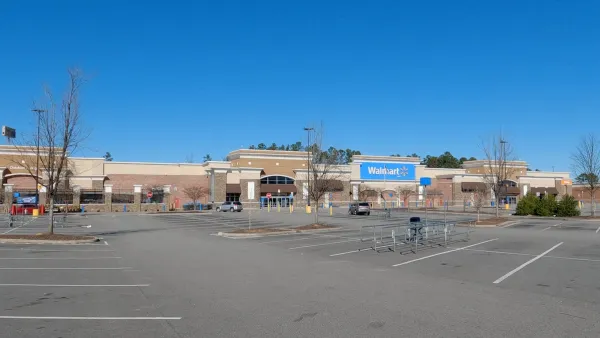One of the ways we identify places is by foods for which those places are known. Baltimore – crab. Maine – lobster. Cincinnati – chili. San Francisco – sourdough bread. Vienna – pastry. Even for a city to which you’ve never been, chances are that in your mind that city has some food association.
One of the ways we identify places is by foods for which those places are known. Baltimore – crab. Maine – lobster. Cincinnati – chili. San Francisco – sourdough bread. Vienna – pastry. Even for a city to which you've never been, chances are that in your mind that city has some food association.
I thought about this last week, while on a food tour of Harlem during the annual conference of the Association for the Study of Food and Society. We spent hours walking through the neighborhoods of Harlem, tracing its evolution through food. The barely visible traces of when East Harlem was home to the largest concentration of Italians outside Italy, and the rapidly fading presence of Puerto Rican cuchifritos (fried snacks, usually pig skin) and pasteles (a tamale-like holiday food). The agua frescas brought by the Mexican influx of the last fifteen years, and the African merchants selling palm fruit oil, fufu (cassava flour), cola nuts, and elubo (yam flour). The papayas and plantains that are consumed by the West Indians as well as many of the other people who have settled in Harlem. And of course, fried chicken, ribs, and greens with macaroni and cheese; a soul food feast that ties Black Harlem to its southern American roots.
And yet, if we played the city – food word association game, I'm guessing these are not the foods that would have been named. New York – bagels. New York – pizza. New York – hot dogs (from a stand on a street corner, natch). New York – weak diner coffee in an iconic Anthora to-go cup, emblazoned with the slogan "We are happy to serve you". New York – black & white cookies. New York – Mister Softee ice cream trucks.
The foods that are associated with New York have been disassociated from their cultural roots. To be sure, we know pizza is Italian and bagels are Jewish, but even so tagged, we are inclined to think: "Jewish bagels are something you eat in New York". They have become a New York food, understood to be iconic of the city. Yet cuchifritos remain steadfastly Puerto Rican not New York, even though I'd wager they are more widely available than New York cheesecake.
Food is one of the many ties we have to place. It is an indicator. If I'm standing on a street corner eating a soft, hot pretzel or a cool Italian ice I know I'm in New York. Yet if I'm standing on that same corner savoring a spicy Jamaican meat pie, though I'm consuming the food of one of New York's many cultures, there is nothing about eating that meat pie that places me in New York. The people of the nearly infinite ethnic subcultures that
have and continue to make up New York's polyglot neighborhoods are celebrating
their ancestral culture, not their identities as New Yorkers, when eating
Dominican arepas (a fat cornmeal
griddle cake, often filled with meat or cheese). If those arepas are transmogrified into knishes, then the consumers become
New Yorkers, or are celebrating New York.
How do these distinctions play into identity? To our
understandings of what it means to belong? To how we map place?

National Parks Layoffs Will Cause Communities to Lose Billions
Thousands of essential park workers were laid off this week, just before the busy spring break season.

Retro-silient?: America’s First “Eco-burb,” The Woodlands Turns 50
A master-planned community north of Houston offers lessons on green infrastructure and resilient design, but falls short of its founder’s lofty affordability and walkability goals.

Delivering for America Plan Will Downgrade Mail Service in at Least 49.5 Percent of Zip Codes
Republican and Democrat lawmakers criticize the plan for its disproportionate negative impact on rural communities.

Test News Post 1
This is a summary

Test News Headline 46
Test for the image on the front page.

Balancing Bombs and Butterflies: How the National Guard Protects a Rare Species
The National Guard at Fort Indiantown Gap uses GIS technology and land management strategies to balance military training with conservation efforts, ensuring the survival of the rare eastern regal fritillary butterfly.
Urban Design for Planners 1: Software Tools
This six-course series explores essential urban design concepts using open source software and equips planners with the tools they need to participate fully in the urban design process.
Planning for Universal Design
Learn the tools for implementing Universal Design in planning regulations.
EMC Planning Group, Inc.
Planetizen
Planetizen
Mpact (formerly Rail~Volution)
Great Falls Development Authority, Inc.
HUDs Office of Policy Development and Research
NYU Wagner Graduate School of Public Service





























